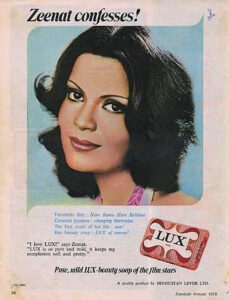Agencies have to be paid. And on time. The only question is, how?
In the initial years, as the advertising business evolved, newspaper owners paid a commission of 15% to advertising agents who bought ad space in their publications. Slowly the individual ‘agents’ grew into advertising agencies with the expertise to develop extensive ad campaigns tailored to clients’ needs.
However, the agencies and the media continued the practice of the 15% commission. All media (e.g., newspaper, TV, radio, hoardings, and other outdoor) accepted it. If an advertisement costs Rs. 1,000, the advertiser pays Rs. 1,000 to the advertising agency. The agency forwards Rs. 850 to the medium and retains the remaining Rs. 150 as its commission. Thus, the agency is paid for the services it provides to the advertiser, by way of the commission. Indeed, for a time advertising agencies were known as commission agents!
So, to create a professional image, the agencies then started charging fees for the strategy and creative they developed. Agency rate cards came into being. Apparently, the better agencies could charge higher fees for creative. Production artworks, which at the time were manual constructions of paper and bromide, quickly became high ticket items. And remained the property of the agency.
Then the agencies started adding a mark-up on other services, like printing and film production, ostensibly for supervision.
Agencies typically marked up production bills by a commission rate of 17.65%; that amount equals a return to the agency of 15% of the combined total of production expenses and agency commission. This has been the point of many an argument between agency and client. Let’s see how the math works. If a production bill comes to Rs. 100, the agency applies a markup of 17.65%, the total paid by the advertiser comes to Rs 117.65 and the agency commission (Rs. 17.65) is equal to 15% of Rs. 117.65.
Even in the U.S., the 15% commission system was the sole basis for agency compensation until 1956. Then, the U.S. Department of Justice removed the system. The Department issued a decree, under which all media were required to sell space and time at the net price to all buyers, whether client or agency. Advertisers in the U.S. could now buy media at net rates and negotiate agency compensation on their own.
The result? Vigorous growth of alternative methods of agency compensation. These new developments soon spread to all countries where advertising was prospering as an industry.
Modern Pricing Structures
Today, the massive mass media campaigns, which were previously deployed by large traditional advertisers, have morphed into targeted defined audience campaigns, driven by complex marketing strategies. Of course, the fragmentation of the media available, partly driven by digital reproduction technology, has enabled clients to run multiple campaigns at the same time, but targeting various customer audiences.
The modern communication agency pricing structure includes an itemized list of expenses involved in creating finished ads.
Today, an agency may, charge a small business a retainer, which, is a predefined fee to cover the estimated cost of creative and production. The client is then free to negotiate with printers for producing literature, or with a media vehicle to carry advertisement.
Another innovation with the modern pricing method is the hourly rate, reflecting the actual time invested in the project, as opposed to a flat fee. The various levels of seniority in the agency have different hourly rates. Clients also realized that this system meant that senior experienced personnel were actually working on their brands.
Under the modern pricing system, agencies may receive incentives when marketing campaigns reach certain metric levels.
In addition, the transition to the Web and other digital media has further impacted the pricing structure of agencies. Commission based advertising, which is based on print advertising, has been largely displaced by digital era pricing such as straight fees and production mark-up for digital media. The standard agency earnings have now dropped to between 3 and 4 percent, according to most industry studies.
Very rarely today are agency compensation arrangements exact clones, but three major alternatives to the traditional 15% media commission system are being used:
- Flat-rate commissions at less than 15%. And clients negotiate hard.
- Downward-sliding scale commissions, in which a client might pay the agency 14% on the first Rs. 10 crore in media billings, 12.5% on the next Rs. 10 crore of media billings and 10% on all media billings in excess of Rs. 20 crores.
- Salary-based fees, calculated from the actual cost of the people assigned to an account, plus allocated agency overhead and agency profit at a stated percentage of revenues.
Now, there are pros and cons to both systems for compensation.
Commission systems of agency compensation—even complex downward-sliding scales—are simple to administer.
However in commission systems where agency compensation is based on media space/time, there is no relevance to either the quantity or the quality of the creative work and other services that are provided to the advertiser client by its agency.
Retainers, on the other hand are decided by the quality of the agency’s personnel and the quality of the work delivered.
But if there is no work for a slightly extended period of time, then an over-zealous bean counter may get motivated to earn some brownie points.
But remember, retainers are prior commitments to pay, and the agency, in most cases, expects payment at the beginning of the month.
With the rapid changes in the media ecosystem in India today, the general tendency is gravitating towards the retainer system, with caveats for outsourced work payments.


















